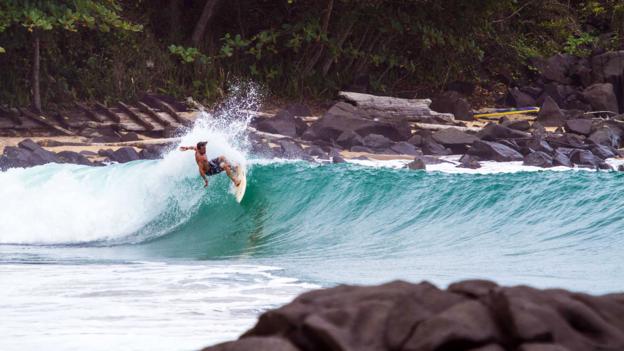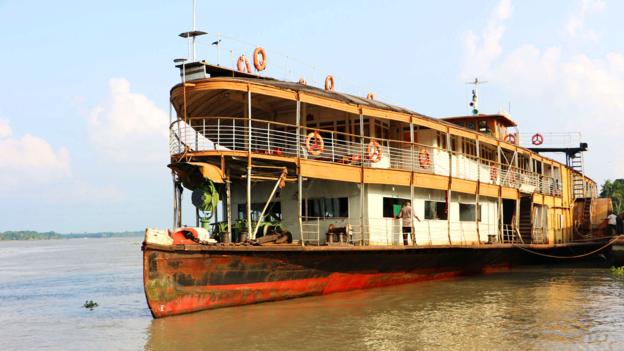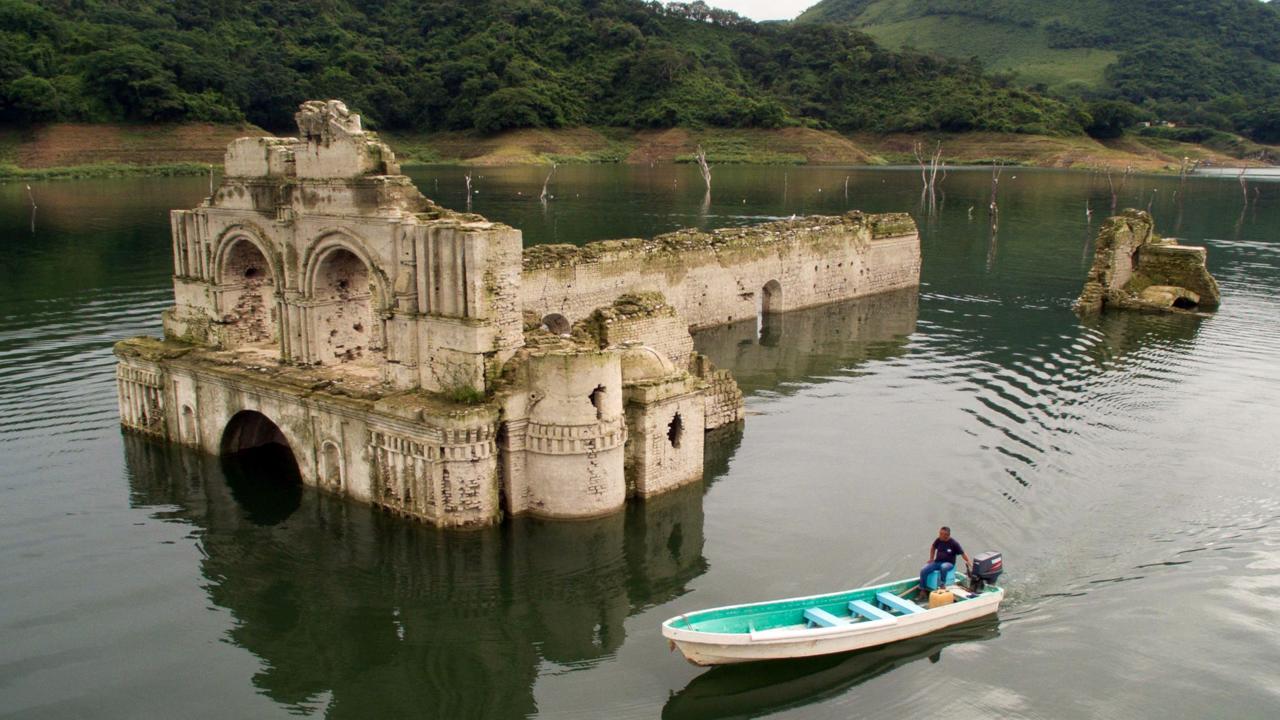
Fascinated by mysteries of the deep
Last week we were reminded that there’s still plenty to both love and learn about our planet, as news went viral about a 16th-century church in Mexico spookily rising from the watery depths. Abandoned in the 18th Century after a plague swept through the Chiapas region, the Temple of Santiago usually rests about 30m underwater. The surrounding area was flooded as part of the 1966 construction of the Nezahualcoyotl Reservoir.
But during periods of drought, the eerie spectre floats to the surface, bringing with it renewed interest in the history of our world. “There are hundreds of submerged cities around the world,” said Dr Jon Henderson, underwater archaeologist and associate professor at The University of Nottingham. “We are only just beginning to discover what they have to tell us about the prehistoric human past.” (Credit: JiJi/AFP/Getty)
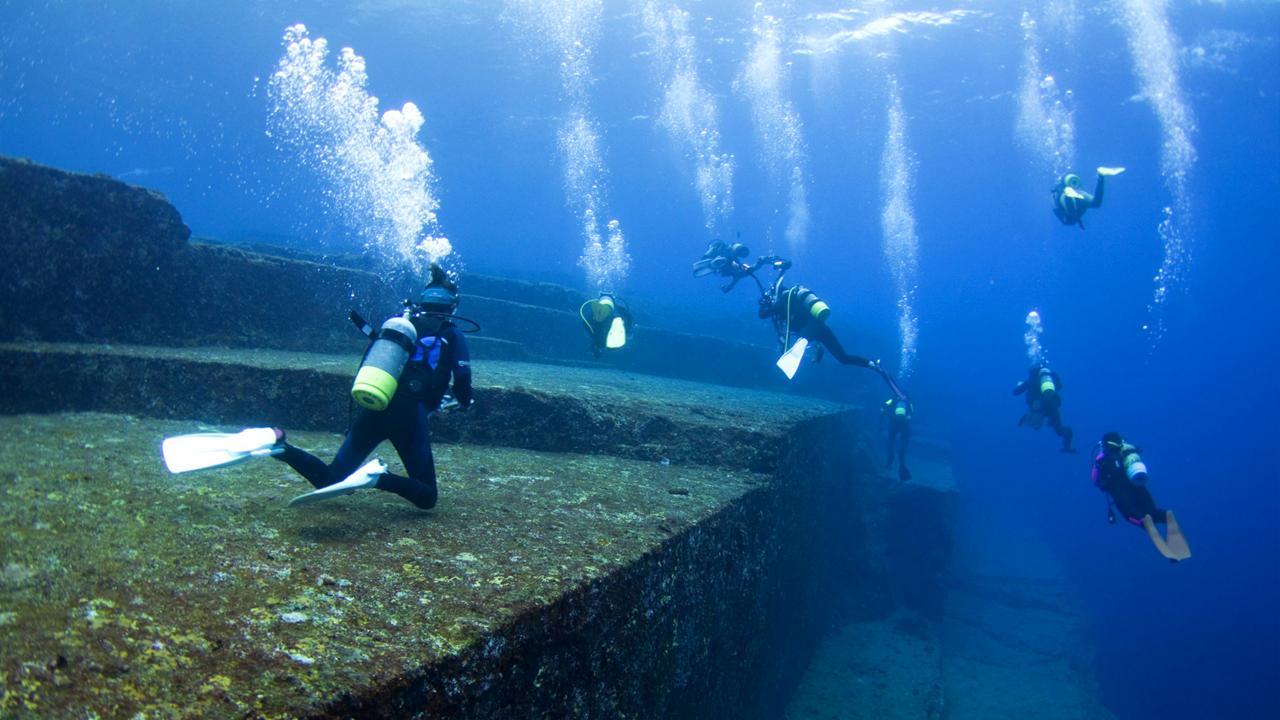
A fabled Pacific civilisation
One of the world’s more mysterious submerged sites is Japan’s Yonaguni Monument, located near the southern tip of the Ryukyu archipelago. In the 1980s, local scuba diver Kihachiro Aratake discovered what appeared to be a monolithic stepped pyramid made of rock, with perfect right angles, huge steps and straight columns – and more strange structures were found in the area over subsequent years.
Some believe this to be the sunken remains of the fabled Pacific civilisation of Mu, which was thought to have been washed away by a tsunami thousands of years ago. Others think that the site is a natural geological formation caused by tectonic activity. Whatever the truth, travellers can decide for themselves by exploring the underwater mystery first hand. Many local dive operators, such as Okinawa’s Reef Encounters, offer excursions to this bizarrely beautiful spot.
“There’s a romance associated with finds from the sea,” Henderson said. “Especially sunken settlements: almost every human civilisation has some form of flood legend, from Gilgamesh through Atlantis to Noah’s Ark.” (Credit: Chris Willson/Alamy Stock Photo)

A drowned Lake District village
More recently, in 2014, Cumbria residents got a scare when a small farming village spookily resurfaced from the depths of England’s Haweswater Reservoir. Mardale Green, one of the area’s most picturesque villages, was sunk in the 1930s to make way for a reservoir that would serve the nearby city of Manchester. Hundreds of residents were evicted from their homes, and farm buildings, pubs and even a church were dismantled. In periods of drought, remains of the ghostly town, including deteriorated farm gates and tree stumps, can emerge from the receding water. (Credit: FLPA/Alamy Stock Photo)
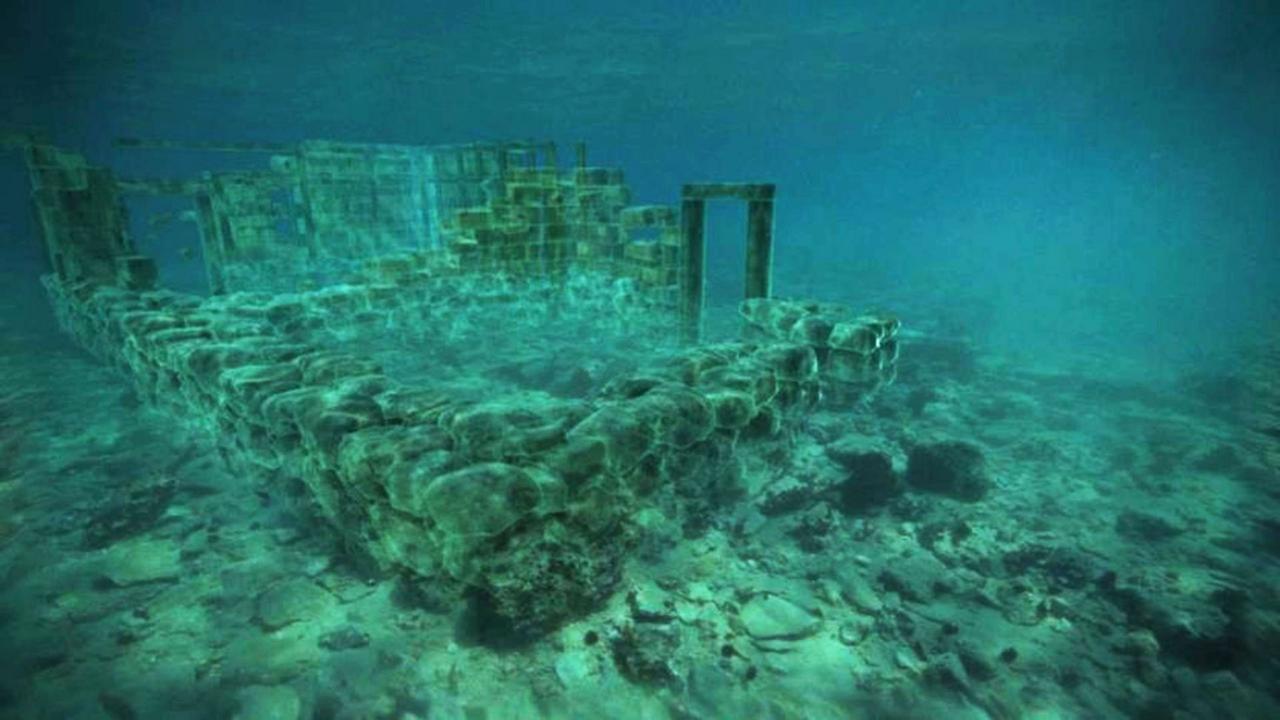
Suburban life, 5,000 years ago
Located just a few metres below water in southern Greece’s Peloponnese region, Pavlopetri is believed to be the world’s oldest submerged city. It thrived for about 2,000 years before being sunk around 1,000 BC.
“We are just beginning to appreciate the implications that 30,000 to 5,000 years ago, sea levels were much lower than today. Vast swathes of the global coastline – the important areas where people lived and settled to exploit as wide a variety of resources as possible – are now underwater,” said Henderson, the project lead on the BBC’s 2011 documentary about the site, which recreated the city using digital mapping and CGI.
What’s especially remarkable about this Bronze Age port city, however, is how well designed it is. Unlike many other sunken structures, there’s no doubt as to whether Pavlopetri is manmade or not. There’s evidence of roads and detached two-storey houses alongside courtyards and gardens – as well as a complex water management system. Searching for lost civilisations is “a fundamental part of finding out where we came from as a species”, Henderson said. But it seems that for all our technological advances, there might not be much difference between the first European civilisations and suburban life today. (Credit: BBC)
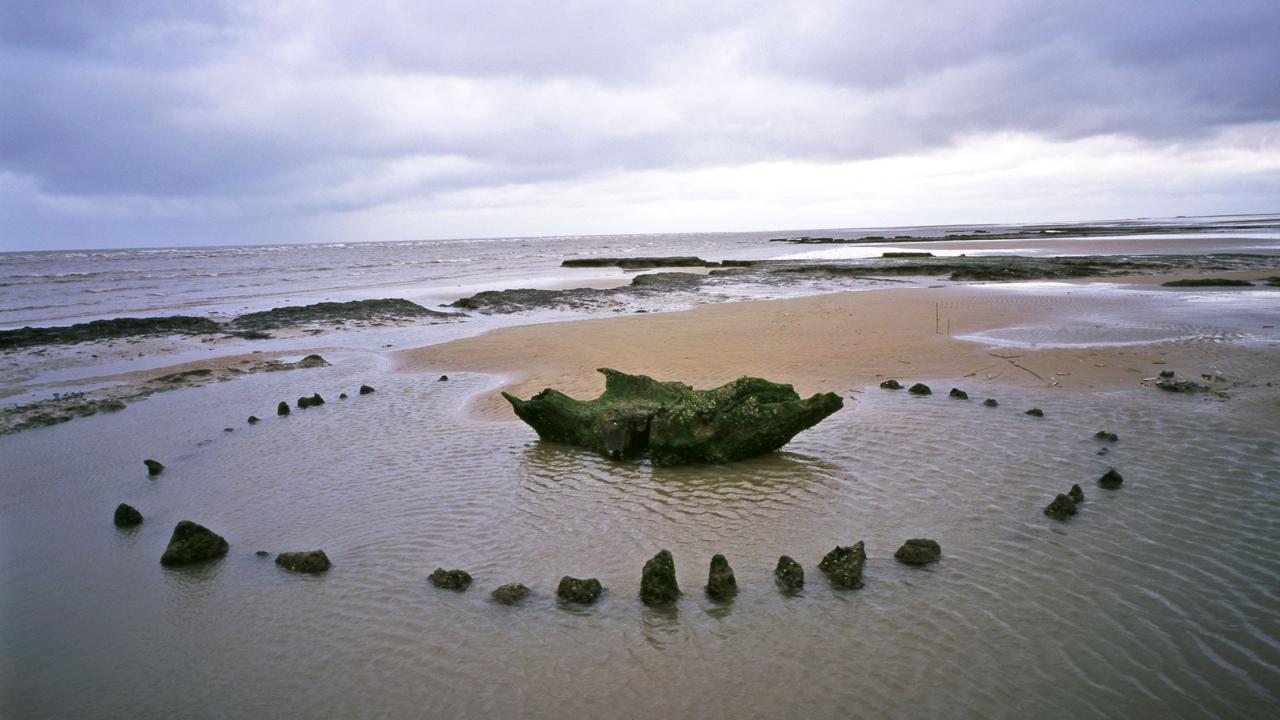
Stonehenge, submerged
Although not a sunken settlement, Norfolk’s Sea Henge is fascinating for its insight into how ancient societies may have honoured their dead. The eerily beautiful prehistoric site, thought to have been part of a monumental complex connected with burial rites, includes a huge upside-down tree stump surrounded by timber posts half submerged in the waves. Dating to 2049 BC, the site was first exposed in the 1990s due to its location on one of England’s fastest-eroding coastlines. (Credit: Edward Parker/Alamy Stock Photo)

When myths become reality
India’s breath-taking Shore Temple – named a Unesco World Heritage Site in 1984 and surviving the ferocious waves of the 2004 tsunami – has proudly stood on the Tamil Nadu coast since the 8th Century.
But local legend has long said that six other temples once stood with it, part of an ancient city so beautiful that it was flooded by jealous gods. Rumour got closer to reality when the 2004 tsunami shook up the Indian coastline, revealing manmade remains like a granite lion. Further underwater exploration indicated that a large complex of temples likely once stood here, most probably destroyed by the very same phenomenon that revealed them more than 10 years ago. (Credit: B.N. Khazanchi/Getty)

The palace of a queen
In the late 1990s, a French-Egyptian archaeology team discovered what appeared to be the grandiose palace of the mighty Egyptian queen Cleopatra, lost for 1,600 years off the shores of Alexandria in the murky waters of Aboukir Bay. Likely submerged by earthquakes and tidal waves – which also sunk Alexandria’s old lighthouse – the palace was full of thousands of artefacts, including sphinxes, statues, coins and amulets.
Ongoing plans are underway to open this incredibly rich archaeological site to the public, in what could be the world’s first underwater museum. In the meantime, many of the best-preserved pieces have been moved to museums, and divers can explore the remaining artefacts scattered throughout the shallow site. “The sea is a dynamic environment and is slowly uncovering new areas – every time you dive it there is the chance of seeing something new,” Henderson said. (Credit: Francois Guillot/Getty)
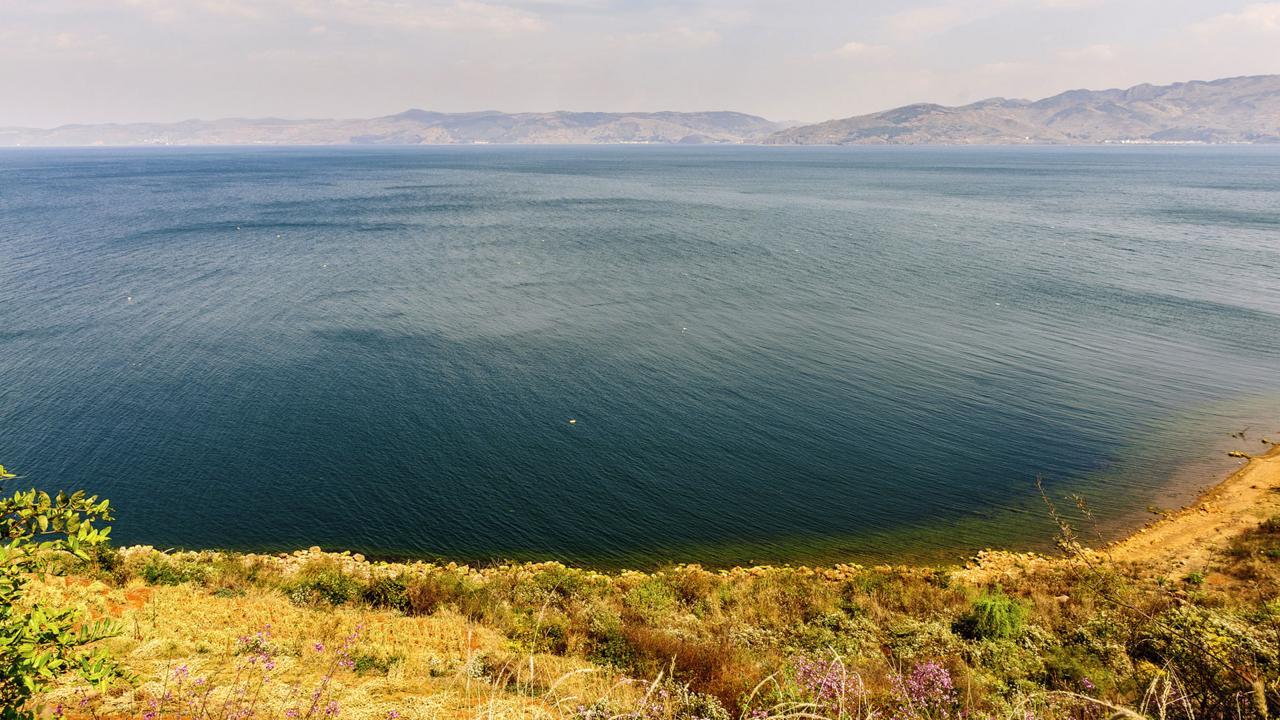
Ancient Chinese legends
An ancient Chinese legend has long touted the existence of a spectral city beneath the waters of Fuxian Lake in Yunnan Province, with locals claiming to have seen ghostlike ruins looming below the surface on calm days. In 2001, an underwater archaeological team began exploring the lake, discovering a vast collection of buildings, including eight pyramid-like structures, along with other manmade stone artefacts. Spread over an area of 6.5sqkm, the ruins are believed to be part of the ancient Dian Kingdom that mysteriously slid into the lake around 2,000 years ago, where it’s quietly lain dormant for all these years. (Credit: Jason Yu/Thinkstock)
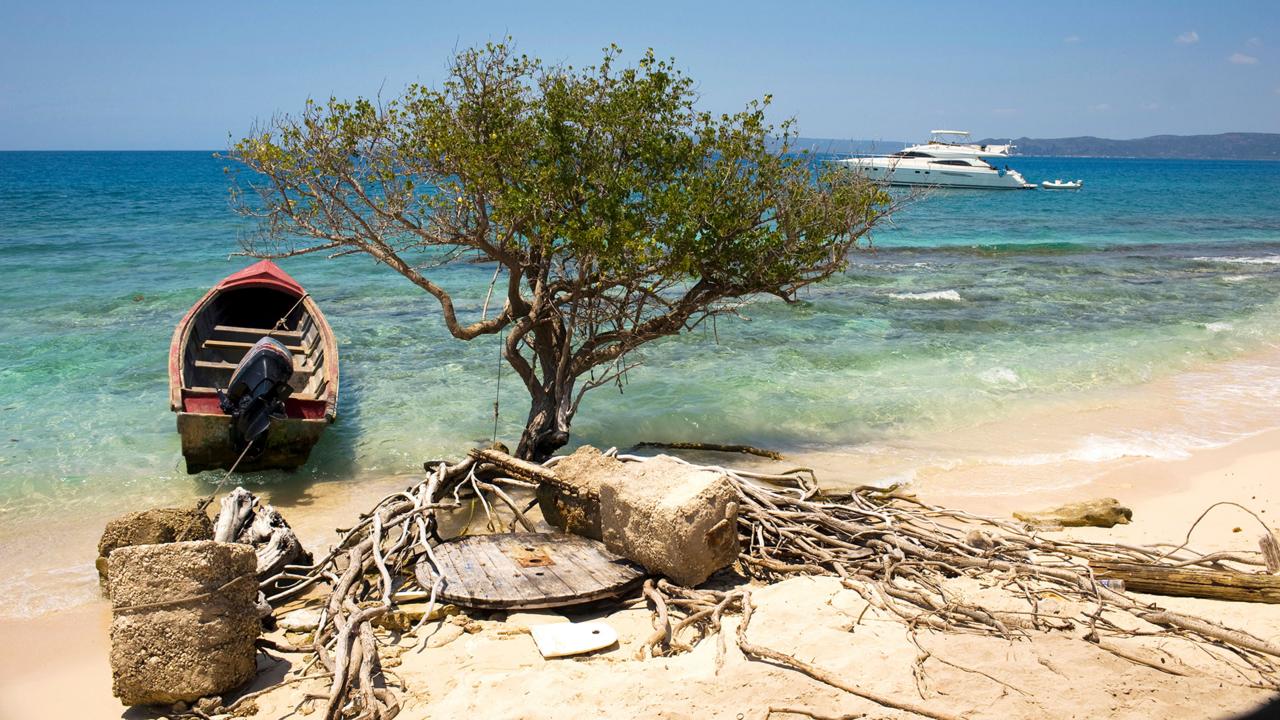
Jamaica’s sunken pirate town
Port Royal was one of the New World’s most important trading posts, made enormously wealthy by the slaves and sugar that passed through its waters. It was also a haven for carousing buccaneers, with bars, brothels and bad behaviour abounding. As the Jamaican city’s riches grew – along with a reputation for excess and debauchery – it became known as the “wickedest city on Earth”. But all this came to a swift end in 1692 when a massive earthquake and tsunami, believed by many to be divine retribution for the city’s sins, pulled much of Port Royal from its sandy peninsula into the sea, killing more than 2,000 people.
Today it’s hard to imagine that below what is now a small sleepy fishing village lays a 17th-century city, some parts as perfectly preserved as they were on the day of the earthquake. Although special access is required to dive the ruins, travellers can see many of the recovered artefacts at Kingston’s Museums of History and Ethnography at the Institute of Jamaica. (Credit: Steffan Hill/Alamy Stock Photo)
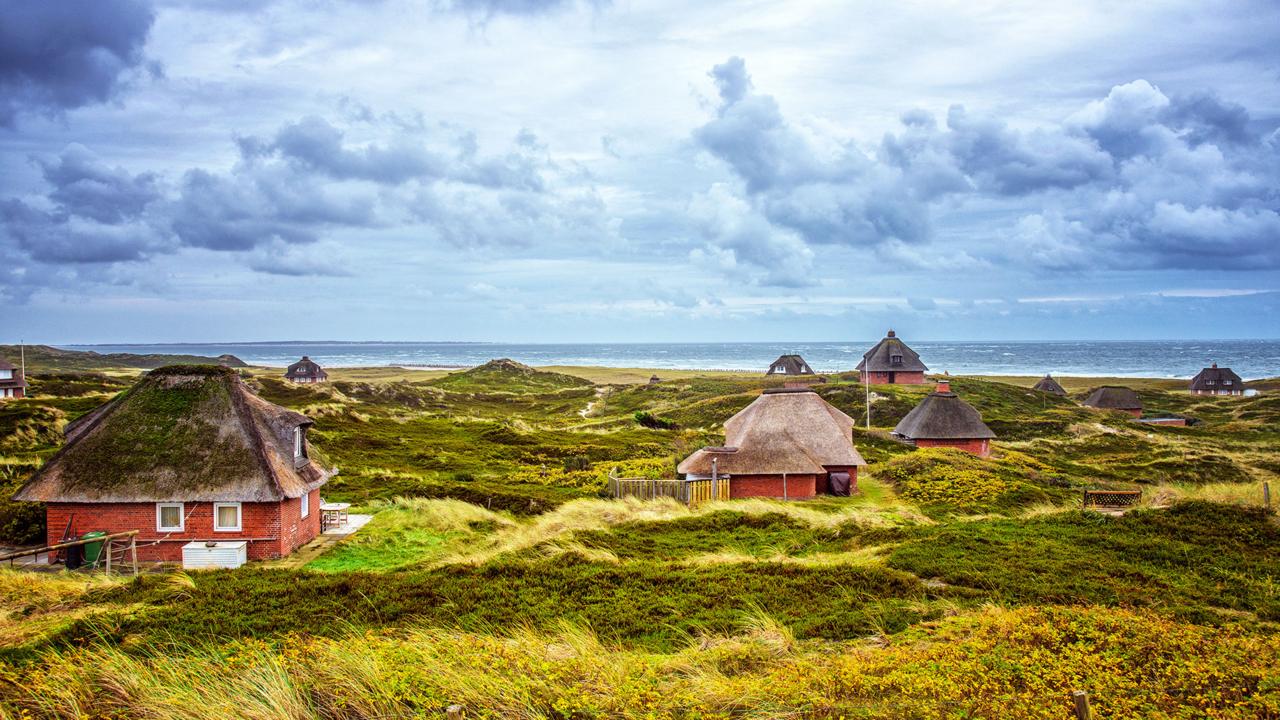
An island dissolved by tides
Along Germany’s northwest border lie the North Frisian Islands, a chain of islets that are slowly being dissolved by the strong North Sea tides. The best-known islet is [Sylt] (http://www.bbc.com/travel/story/20130523-exploring-germanys-northernmost-island), where long sandy beaches, grass-covered dunes and quaint customs draw German and European tourists in droves.
But beyond the beachy paradise lies a darker secret. The island used to be substantially larger, as tides over the centuries have slowly eroded the coastline. And a few hundred metres off its western shore lies the sunken settlement of Eidum, which bore the full brunt of the North Sea’s force until it finally disappeared into the waves after a 1436 storm surge. Today, travellers can explore the stunning beaches of Westerland, the higher-up settlement founded by Eidum’s survivors, and hike the island’s distinctive and beautiful mud flats. (Credit: Juergen Sack/iStock)
[“source -bbc”]

